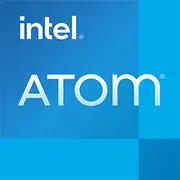Intel Atom Z2420

Intel Atom Z2420: An Ultra-Budget Processor for Minimalist Tasks
April 2025
Introduction
The Intel Atom Z2420 processor, released in the early 2010s, became a symbol of an era when the market was flooded with compact and inexpensive devices — netbooks, tablets, and hybrid gadgets. Although this chip appears archaic in 2025, its legacy helps us understand the evolution of mobile technologies. In this article, we will explore what tasks the Z2420 can handle today, who might find it useful, and how it compares to modern solutions.
Architecture and Process Technology
32 nm and a Single Core: Simplicity as a Foundation
The Atom Z2420, known by its codename Penwell, is built on a 32-nanometer process technology. It is the second generation of the Atom architecture (Saltwell) optimized for mobile devices. Its key features include:
- 1 Core and 1 Thread: A single-threaded architecture without support for Hyper-Threading.
- Clock Speed: 1.2 GHz without Turbo Boost capabilities.
- In-Order Execution: Instructions are processed sequentially, which reduces performance but simplifies design and energy consumption.
Integrated Graphics GMA (PowerVR SGX540)
Although labeled as GMA, the graphics module is based on the PowerVR SGX540 core with a clock speed of 400 MHz. It supports:
- 1080p video playback through Imagination Technologies decoders.
- OpenGL ES 2.0 and OpenVG 1.1 APIs, allowing for the execution of simple 3D applications.
Architecture Features
- L2 Cache: 512 KB.
- DDR2-800 Support: Limited memory bandwidth.
Power Consumption and TDP
3 W: Energy Efficiency at the Cost of Power
With a TDP of 3 W, the Z2420 is ideal for passive cooling. Even under load, the chip barely warms up, enabling the creation of ultrathin devices without fans. However, this low energy consumption comes at the expense of modest performance.
Energy-Saving Technologies
- Intel SpeedStep: Dynamic frequency reduction during idle periods.
- C6 State: Power-off for unused processor blocks.
Real-World Performance
Office Work: Only the Basics
- Text Editors (Word, LibreOffice): Document work without complex formatting.
- Web Browsing: Opening 2-3 tabs in a browser (Chrome or Firefox) with light content. YouTube 720p experiences some stuttering.
- Multitasking: Switching between applications results in delays.
Multimedia: Limited Capabilities
- Video: 1080p through hardware decoders, but streaming high-quality content (Netflix, YouTube) requires optimized applications.
- Audio: Streaming music — no issues.
Gaming: Retro and Mini-Games
- Game Examples: Minecraft (minimum settings), Stardew Valley, browser games.
- 3D Graphics: Angry Birds, Temple Run — up to 30 FPS.
Turbo Mode: Absent
The Z2420 does not support Turbo Boost, meaning the peak clock speed is always fixed at 1.2 GHz.
Use Cases
Who is the Z2420 Relevant for in 2025?
- Children and Seniors: Simple tasks (printing, reading, YouTube Kids).
- Backup Devices: A cheap laptop for travel.
- Special Equipment: Data collection terminals, information kiosks.
Not Suitable for:
- Graphic work (Photoshop, video editing).
- Modern Operating Systems (Windows 10/11 require at least 2 cores).
Battery Life
Up to 8-10 Hours: Myth or Reality?
In devices with a 30-40 Wh battery (e.g., Lenovo IdeaTab A1000 tablet), the Z2420 achieved up to 8 hours of operation. However, by 2025, battery capacities have increased, and modern chips (like the Intel N100) provide five times the performance for similar battery life.
Comparison with Competitors
AMD C-60 (2011):
- 2 cores, Radeon HD 6290 graphics.
- TDP 9 W, performs better in multitasking.
Apple A5 (2011):
- ARM architecture (iPad 2).
- Higher energy efficiency, optimized for iOS.
Modern Analogues (2025):
- Intel N100 (7 nm): 4 cores, TDP 6 W, supports Wi-Fi 6.
- Qualcomm Snapdragon 7c Gen 3: Always-On 5G connectivity, AI accelerators.
Pros and Cons
Strengths:
- Price: Devices with the Z2420 cost $150-200.
- Compactness: Gadgets weighing up to 1 kg.
- Quiet Operation: No fans.
Weaknesses:
- Low performance.
- Lack of support for modern operating systems and applications.
- Limited compatibility with peripherals (missing USB 3.0).
Recommendations for Choosing a Laptop
If you are considering the Z2420 in 2025:
- Device Type: Ultra-budget tablets or netbooks (e.g., ASUS Eee PC X101CH).
- What to Check:
- RAM: Minimum 2 GB (preferably 4 GB).
- Storage: SSD preferred over HDD.
- Ports: USB 2.0, HDMI — for monitor connection.
Advice: For $300-400, you can buy a laptop with an Intel N100 or AMD Athlon Silver that will last longer.
Final Conclusion
The Intel Atom Z2420 is a processor for very narrow tasks. In 2025, it should be considered only as:
- A Teaching Tool for studying the evolution of technologies.
- A Backup Device for emergencies.
Key Benefits:
- Ultra-low price.
- Record battery life.
- Uncomplicated use.
If you need a cheap gadget for reading, viewing PDFs, or working in a terminal, the Z2420 can handle it. But for any other tasks, it's better to choose a modern processor that supports multitasking and current standards.
Note: New devices featuring the Atom Z2420 are not produced in 2025. Previously, they were positioned as solutions for emerging markets, but are now completely replaced by ARM chips and more advanced x86 processors.
Basic
CPU Specifications
Memory Specifications
GPU Specifications
Share in social media
Or Link To Us
<a href="https://cputronic.com/en/cpu/intel-atom-z2420" target="_blank">Intel Atom Z2420</a>